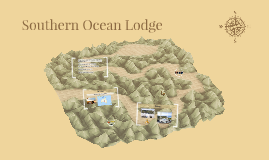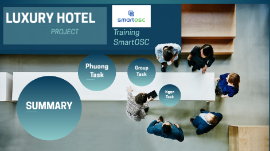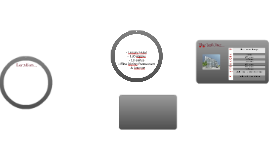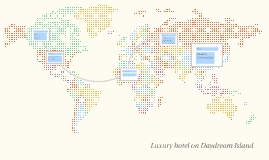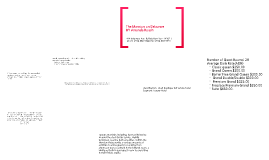Luxury Hotel
Transcript: High reputation for excellence of service delivered to customer Highly reputable local chefs and interior designers Approachable Luxury Focus on the customer experience rather overly-expensive image Emphasis on French “Art de vivre” Try to attract more and more leisure customers Renowned art collections Financial Performance Differentiation and exclusiveness Focus on unforgettable customer experiences Excellence in product and services Sophisticated Style and Comfort Strategy Support Activities Niche market for Shangri-la 5* hotels and resorts : highest incomes individuals & families; still high income for other brands of the group but less exclusive Prestigious partnerships and contracts Diversification Financial Performance HY-Pass, mobile app for guests Resource and Capabilities Luxury brand of Hilton Worldwide 26 hotels over 12 countries (10 653 rooms) Target segment: International elite customers, celebrities, diplomats Resources and capabilities 120 Hotels in 24 countries Demographic target : affluent individuals (and families), whealthy people sensitive to asian culture and sense of hospitality, political eminencies, businessmen Shangri-la hotels : small scale high pricing (5* hotels only) Shangri-la group : larger coverage and diversification (resorts and concept hotels) Diversification (in style of hotels) Alliances (in using points for customers) Luxury Hotel Primary activities Support activities Inbound Logistics: Suppliers in each city Operations: Transformation of the initial good into the final service. Outbound Logistics: Tangible and intangible products are offered to the customers. Marketing and Sales: Marketing strategies to promote the hotels Service: After sale service, crucial to assure the customers satisfaction. Technical process Suppliers: Furniture & Art Food & Beverage Entertainment Landmark Hotels Unique and original artwork Agreement with luxury brand to offer premium Spa in the hotel Global Design Team and Celebrity Chef Hilton HHonor frequent guest program Global Online service & highly developed technologies Luxury Hotels Strategy Alliances Retailer: Travel agencies Tour operator Websites Competitive advantage through global product differentiation Emphasis on luxury, exclusiveness and Asian hospitality Attentive staff and personels Sustainability chart Brand Overview Infrastructure: Efficient system to control hotels' performances based on cleanliness, quality, service, atmosphere and maintenance of the hotels. Human Resource Management: Workshop and training for workers to show them how they have to perform in the work place. Technology Development: Official website enables customers to book a room and request additional services from anywhere in the world. Procurement: Suppliers have to provide high quality product and service as well as follow the rules and obligation set up by the firms. Brand Overview Implemented corporate strategy JW Marriot Boutique hotel brand of Hyatt Hotels Corporation Operates 36 hotels across 21 countries (6,725 rooms) Demographic target: affluent individuals, executives, dignitaries, and celebrities Small-scale, high pricing Strategy Sub-fields of luxury (ex. Art) Value Chain Trends Implemented corporate strategy Technological Emergence of new distribution channel and information source through internet Increase in occupancy rate Diminished bargaining power of hotels Resources and Capabilities Leadership of Bill Marriott Jr. Kept focus on hotel industry Managed employee unions and employee happiness Diverse experience in related industries: airline-catering, restaurants Key expertise in technology: MARSHA – Marriott hotel’s reservation system Does not own the majority of its properties Highly reputable interior designers Sociocultural Affected by trend; type of hotel and destination Highly cyclical Macro Environment Brand Overview Speed and precision Wow customer service Expectation of more international visitors Social media and mobile Review site tactics Sustainability 1200 hotels across 100 countries, 180,000 employees (10 brands) Forefront of the hospitality industry High scale and high pricing Tony Chi, who has won multiple awards for his interior designs of Park Hyatt Shanghai Renowned design firm Yabu Pushelburg Brand Overview Implemented Corporate Strategy Ecological Growth of environmentally aware customers, need to meet their requirement Positioning Park Hyatt Partnership with French luxury brands and renowned fashion designer and architects Historical hotels of the Sofitel Legend portfolio Famous French restaurant all over the world Hotel staff trained in luxury knowledge Resource and Capabilities Brand Overview Sold its airline-catering and restaurant services – promoted focus on the hotel management business Further acquisitions: Acquired Ritz Carlton and Renaissance Hotels to consolidate luxury and international hotels market Political Openness of frontiers Governmental incentive to tourism Country’s stability and internal conflicts







